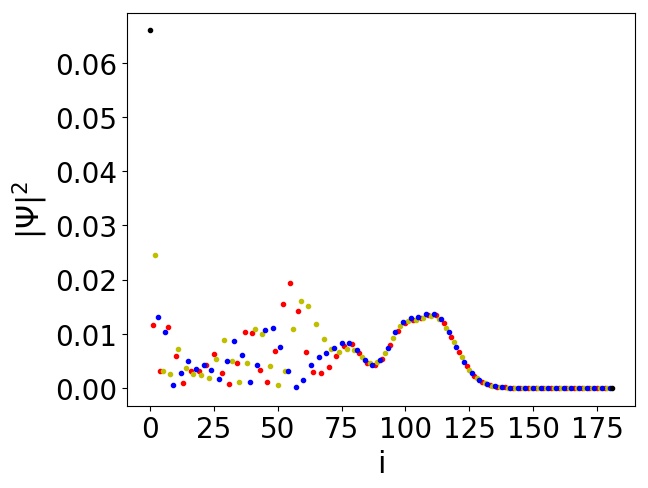Polaron Dynamics:
The energy used by cells mostly comes from the hydrolysis of ATP. (Most of the energy in the sugar that we eat is ultimately transformed into ATP). It has been observed that some of the energy needed by the cell outside its membrane originates from hydrolysis of ATP taking place on the inside of the cell membrane. The question then arises as to how the energy is carried over the membrane. In 1973 Davydov proposed a model to explain this transfer: an electron excitation on a trans-membrane protein interacts with the lattice formed by an alpha-helix (a special configuration of proteins) to form a lump of energy called soliton or polaron. The polaron can then move along the protein to carry the energy released by the ATP-hydrolysis.At the time, computer facilities did not allow to fully solve the equations of the model. Moreover, several improvements could be made to make the model more realistic. Phys Rev E 98 (2018) 012401 doi: 10.1103/PhysRevE.98.012401, Eur. Phys. J.B. 90 (2017) 154 doi: 10.1140/epjb/e2017-80209-2.
Recently, L. Brizhik, J. Luo, W. Zakrzewski and myself developed a model to explain the actual transfer of energy along a protein, from the creation of the polaron by a so called donor up to its absorption by an acceptor. Phys. Rev. E 90 (2014) 052915 doi: 10.1103/PhysRevE.90.052915, as well as http://arxiv.org/abs/1909.08266.

|
| Time evolution of the electron transfer along an alpha-helix. The black * on the left is the probability the the electron is on the donor. The * on the right is the probability of the electron to be on the donor. The colour dots correspond to the electron probability density on the 3 strands of the alpha-helix |
Movie:  |
| Same time evolution as above zoomed in to better see the polaron. |